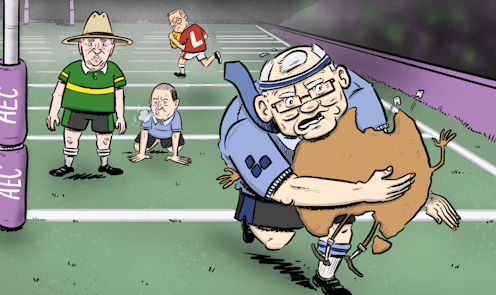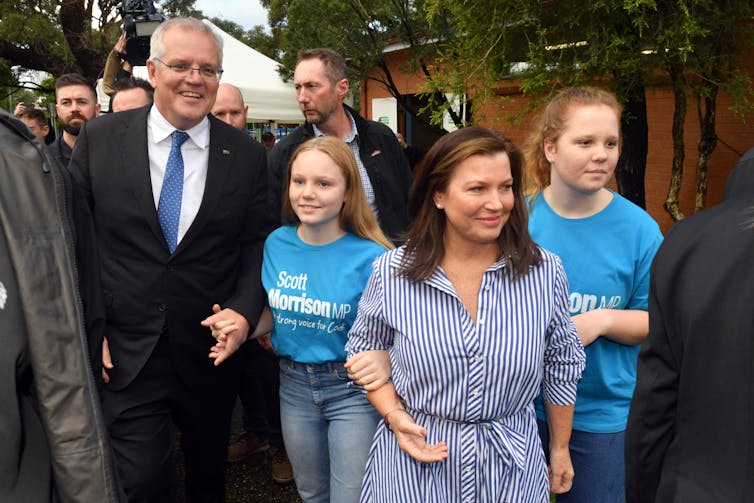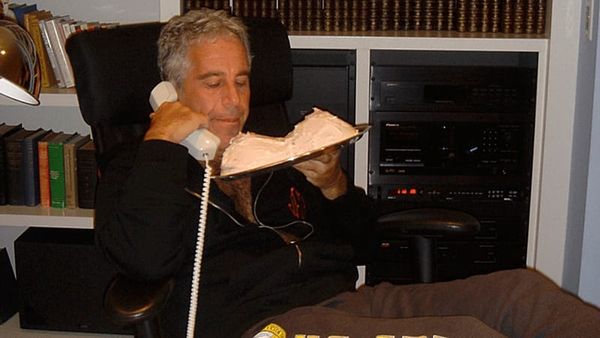
It is incredible the government that led Australia through the pandemic with one of the highest vaccination rates, some of the lowest per capita death rates and, comparatively, a good story to tell on the economy has decisively lost government.
How did it come to this?
Read more: How the Liberals lost the 'moral middle class' - and now the teal independents may well cash in
A legacy of lost opportunities
As I wrote after his miracle win in 2019, Morrison had the chance to use his towering authority as a proven winner to shape the government’s agenda. And this he duly did.
He made a virtue of his pragmatism: Morrisons’ government racked up billions in debt to save the economy, but made it clear which sectors were out of favour. The flaws in the COVID vaccine rollout stemmed from early decisions designed to maximise the government’s political benefit.
But when the strategy fell apart due to a lack of forethought and capacity, the states took up the slack and the military was brought in.
The government flirted with industrial relations reform before shelving it as too risky.
The Commonwealth Integrity Commission saga revealed precisely the government’s true preferences on accountability.
The government’s response to women’s anger – try as it might – only succeeded in comprehensively showing they did not understand the problem.
Morrisons’ three-year long crab walk on a 2050 emissions target illustrated both his political skills but also his impotence in the face of the Nationals, upon whom he was dependent to govern.
The government’s shock when its religious freedom bill failed, demonstrated where it was prepared to fight and die.
At the end of three years and a six-week campaign, the same question about what a Coalition government even wanted to do with another term was – unbelievably – still hanging in the air.
Morrison – a brilliant communicator and a bulldozer
Morrison has always been a brilliant communicator and his message has been clear all along: despite a rapidly changing world, he would defend, as far as possible, the status quo.
Like all successful Liberal leaders, Morrison did dominate his government and did shape it in his own image.

An overt political lens was foremost in everything his government did. Morrison was spot-on when he described himself as a bulldozer.
But it wasn’t that he rushed to policy solutions, in a crash or crash-through style; it was that he bulldozed over political problems, burying them in spin.
By governing so cynically, the Morrison government eroded the goodwill it would need to see it through the inevitable missteps that occur when governing in extraordinary times.
What now for the Liberal Party?
After almost a decade in power the Coalition government’s policy legacy is comparatively thin. Instead, its achievements are obscured in the popular memory by leadership instability and the policy churn it unleashed.
Both phenomena are symptomatic of a party that has increasingly struggled to debate ideas generally, and which missed a critical opportunity to do so in opposition between 2007 and 2013.
Indeed, the problems the Liberals faced in 2019 remain the same, if not more pressing. This is a party that has to manage several competing ideological standpoints and lacks the internal institutional machinery to manage debates and settle disputes.
Its primary mechanism to resolve policy disputes remains leadership change.
The most obvious area where this will be difficult for the party is climate change. Having lost its majority, the party’s position on climate change remains unfinished business.
The deal struck by Morrison in government on climate change was fragile, and with the loss of many pro-climate candidates it remains to be seen whether the Coalition will adhere to the agreement – especially as opposition clears the policy decks.
The teal independents’ victory will see the federal Liberal party room shift further to the right.
The likely defeat of Josh Frydenberg, the leading Liberal left/moderate leadership candidate in a seat one once held by the Liberal Party’s founder, Sir Robert Menzies, leaves that wing of the party without clear leadership in the lower house (especially after so many other moderates have also lost their seats).
Should Morrison resign tonight or fail to be reaffirmed by the party room, the leadership of Peter Dutton, the most likely leader in opposition, would likely see the Liberal Party take a different direction across several policy domains.
At a practical level, the loss of once rock solid blue ribbon seats removes resources from the moderate/left faction of the Liberal party.
With the lost seats also goes several staff positions and the resources of an electoral office.
It will also renew the factional conflict over candidate selection at both the state and federal levels as the balance between the left/moderate and right/far right factions within the NSW and Victoria in particular is hotly contested.
Organisationally, the party is riven in several states by factional conflict focused overwhelmingly on controlling candidate selection.
Its organisation has continued to drift and degrade as its party membership grows older (around 70 years of age) and questions are raised about the sincerity of new recruits given the history of alleged branch stacking scandals.
Given the success of the female “teal” independents, it is hard not to think what the Liberal party might look like today if it had found a way to replicate Labor’s recruitment of women into the parliament.
Across the world, women are more likely to worry about climate change and cross-national studies show centre-right women are less conservative than their male counterparts.
Perhaps a party with 50% women might have shifted the Coalitions’ internal culture and made it able to hear a major shift going on within the electorate.
These are uncertain days for the Coalition and the Liberal party. There will always be a need for a centre-right party in Australia.
But the loss of so many from the moderate wing will, if not amended in coming elections, radically shift the balance of power internally within the party and its position within the Australian party system.
Marija Taflaga receives funding from the ARC for a project that looks into the career pathways of political elites.
This article was originally published on The Conversation. Read the original article.







